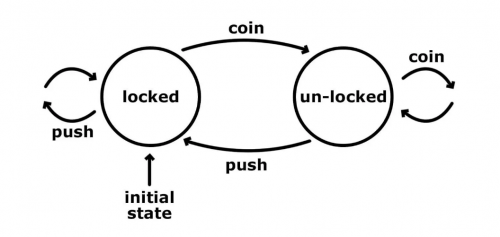
“The Rise Of The State Machines” is a nice introductory article into the domain of process management and state machines.
A state machine is a mathematical model of computation. It’s an abstract concept whereby the machine can have different states, but at a given time fulfills only one of them. There are different types of state machines. The most famous one, I believe, is the Turing machine. It is an infinite state machine, which means that it can have a countless number of states. The Turing machine does not fit well in today’s UI development because in most cases we have a finite number of states. This is why finite state machines, such as Mealyand Moore, make more sense.
The difference between them is that the Moore machine changes its state based only on its previous state. Unfortunately, we have a lot of external factors, such as user interactions and network processes, which means that the Moore machine is not good enough for us either. What we are looking for is the Mealy machine. It has an initial state and then transitions to new states based on input and its current state.
There are quite a few JavaScript code examples and library references, illustrating the basic concepts and implementation.


